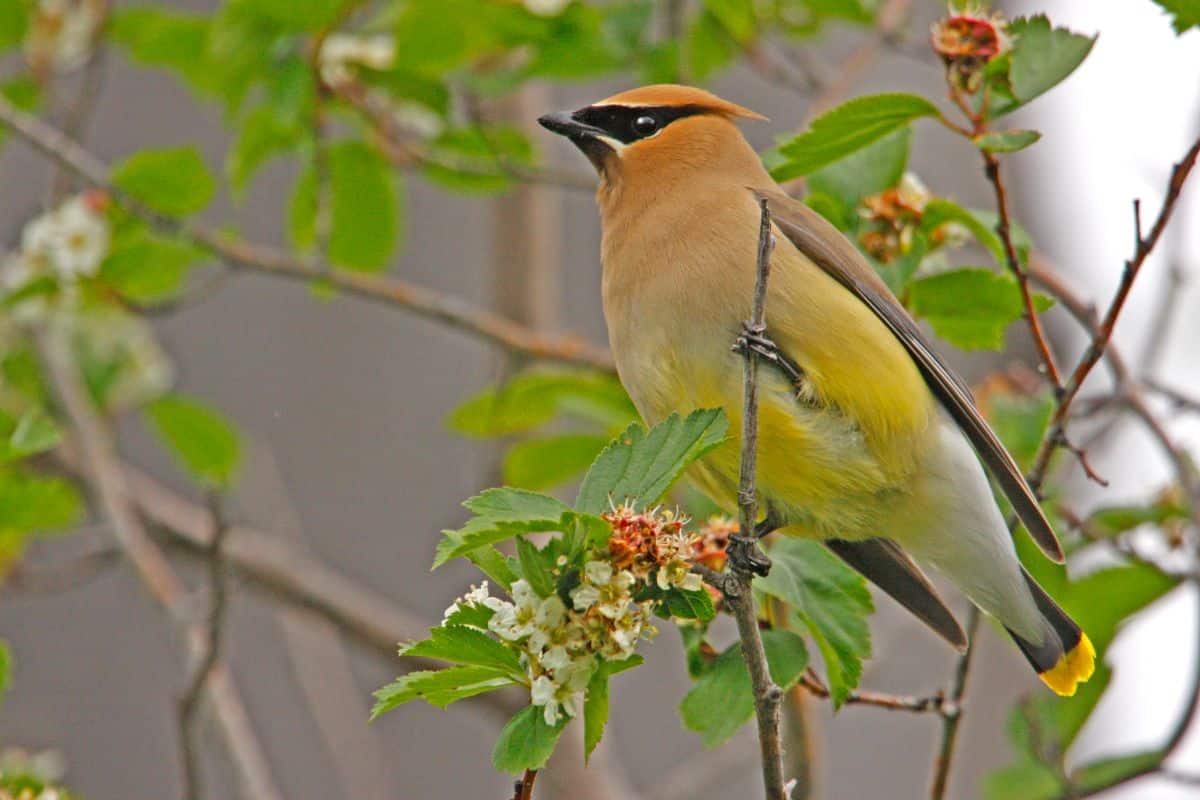The Cedar Waxwing (Bombycilla cedrorum) is a delightful and elegant songbird native to North America. Here are some fascinating details about the Cedar Waxwing:
1. Appearance: The Cedar Waxwing is a medium-sized bird with a sleek and refined appearance. It has a silky plumage that is predominantly brownish-gray, with a pale yellow belly and a distinctive black mask across its eyes. Its most striking feature is the waxy red tips on the secondary feathers, which give the bird its name. These wax-like tips are more pronounced in adult birds.
1. Distribution and Habitat: Cedar Waxwings are found throughout North America, from southern Canada to parts of Mexico. They prefer habitats with a mix of open woodlands, orchards, and areas near water sources. They are often seen in groups or flocks, especially during the winter when they gather to feed on available fruit.
1. Feeding Behavior: Cedar Waxwings have a unique diet preference. They are primarily frugivorous, meaning they primarily feed on fruits. They have a particular fondness for berries, such as those from cedar trees, hawthorns, and junipers. They also consume insects, especially during the breeding season when they need to provide protein-rich food for their chicks.
1. Social Behavior: Cedar Waxwings are highly social birds and often seen in large flocks, especially during the non-breeding season. They engage in cooperative feeding, where they pass berries or fruit among themselves. This behavior is believed to strengthen social bonds within the group.
1. Breeding and Nesting: Cedar Waxwings form monogamous pairs during the breeding season. They build cup-shaped nests using twigs, grass, and other plant materials, often situated in trees or shrubs. The female typically lays 3 to 5 pale blue eggs, which are incubated by both parents. After hatching, both parents participate in feeding and caring for the chicks.
1. Soft Whistling Calls: Cedar Waxwings have soft, high-pitched whistling calls that can be described as “high, thin, and lisping.” These calls are often heard when the birds are in flight or when communicating within their flock.
1. Conservation Status: The Cedar Waxwing is not currently considered globally threatened and has a stable population. However, they can be impacted by habitat loss, pesticide use, and collisions with windows. Conserving their preferred habitats, planting native fruit-bearing trees and shrubs, and minimizing the use of pesticides are important for their continued well-being.
The Cedar Waxwing’s elegant appearance, social behavior, and unique feeding habits make it a captivating bird species to observe. Its presence adds charm to North American landscapes and serves as a reminder of the diverse avian wonders found in the region.


